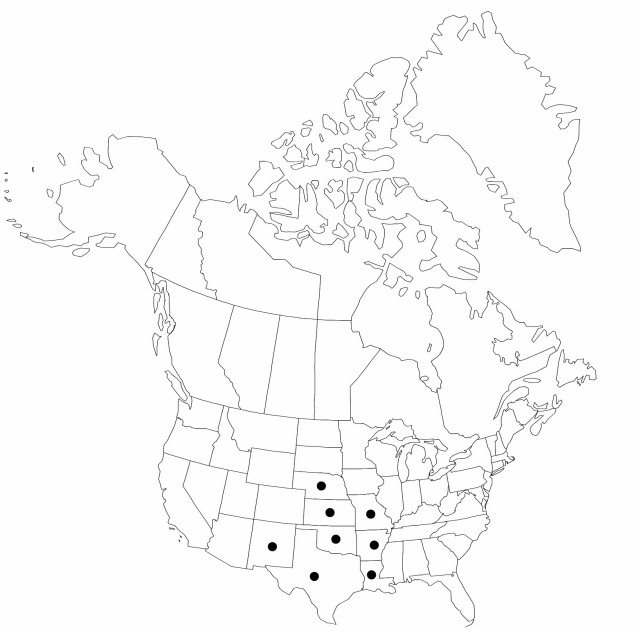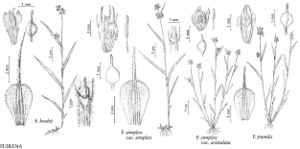Difference between revisions of "Fuirena simplex var. aristulata"
Sida 7: 336. 1978.
Basionym: Fuirena squarrosa var. aristulata Torrey Ann. Lyceum Nat. Hist. New York 3: 291. 1836
FNA>Volume Importer |
FNA>Volume Importer |
||
| Line 10: | Line 10: | ||
|name=Fuirena squarrosa var. aristulata | |name=Fuirena squarrosa var. aristulata | ||
|authority=Torrey | |authority=Torrey | ||
| + | |rank=variety | ||
|publication_title=Ann. Lyceum Nat. Hist. New York | |publication_title=Ann. Lyceum Nat. Hist. New York | ||
|publication_place=3: 291. 1836 | |publication_place=3: 291. 1836 | ||
| Line 28: | Line 29: | ||
|elevation=0–500 m | |elevation=0–500 m | ||
|distribution=Ark.;Kans.;La.;Mo.;Nebr.;N.Mex.;Okla.;Tex. | |distribution=Ark.;Kans.;La.;Mo.;Nebr.;N.Mex.;Okla.;Tex. | ||
| − | |discussion=<p>Most North American material of < | + | |discussion=<p>Most North American material of <i></i>var.<i> simplex</i> is cespitose, the rhizomes short. In such specimens the evident perennial habit and the longer anthers are more reliable characteristics.</p> |
|tables= | |tables= | ||
|references= | |references= | ||
| Line 37: | Line 38: | ||
-->{{#Taxon: | -->{{#Taxon: | ||
name=Fuirena simplex var. aristulata | name=Fuirena simplex var. aristulata | ||
| − | |||
|authority=(Torrey) Kral | |authority=(Torrey) Kral | ||
|rank=variety | |rank=variety | ||
| Line 52: | Line 52: | ||
|publication year=1978 | |publication year=1978 | ||
|special status= | |special status= | ||
| − | |source xml=https://jpend@bitbucket.org/aafc-mbb/fna-data-curation.git/src/ | + | |source xml=https://jpend@bitbucket.org/aafc-mbb/fna-data-curation.git/src/f50eec43f223ca0e34566be0b046453a0960e173/coarse_grained_fna_xml/V23/V23_52.xml |
|genus=Fuirena | |genus=Fuirena | ||
|species=Fuirena simplex | |species=Fuirena simplex | ||
Revision as of 20:09, 16 December 2019
Herbs usually annual, rarely taller than 30–40 cm; rhizomes mostly absent, when present very short. Culms tufted (more slender than in preceding variety). Leaves: principal blades 5–12 cm. Spikelets to 12, lance-ovoid or lanceoloid; fertile scales 2–3 mm. Flowers: anthers 1–3, 0.5–0.6 mm.
Phenology: Fruiting summer–fall.
Habitat: Sand or clay, silt, of prairie swales, alluvial terraces, moist waste sites, pond and lakeshores
Elevation: 0–500 m
Distribution

Ark., Kans., La., Mo., Nebr., N.Mex., Okla., Tex.
Discussion
Most North American material of var. simplex is cespitose, the rhizomes short. In such specimens the evident perennial habit and the longer anthers are more reliable characteristics.
Selected References
None.
Lower Taxa
None.
